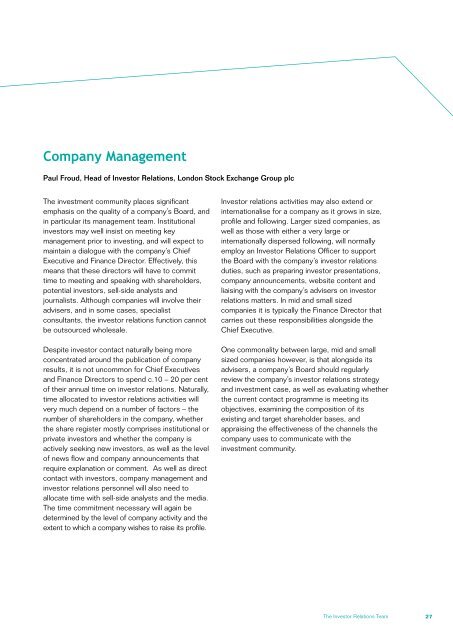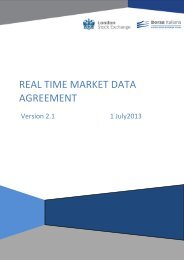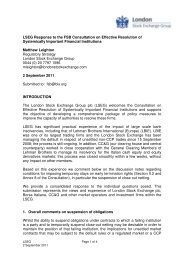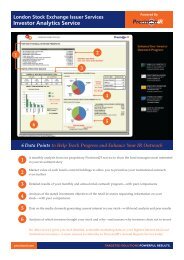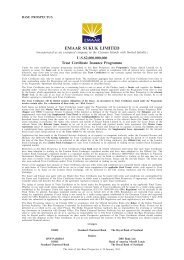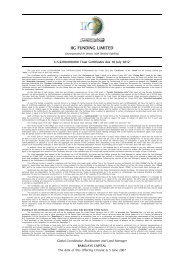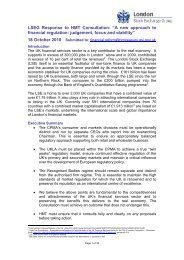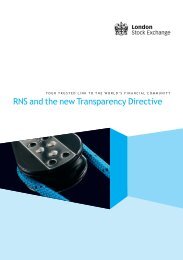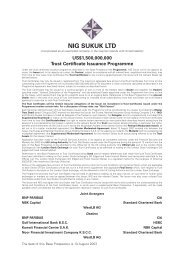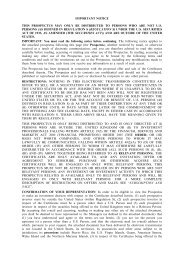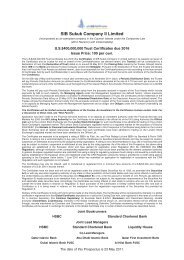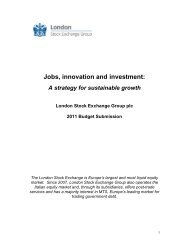Investor Relations - A Practical Guide - Investis
Investor Relations - A Practical Guide - Investis
Investor Relations - A Practical Guide - Investis
You also want an ePaper? Increase the reach of your titles
YUMPU automatically turns print PDFs into web optimized ePapers that Google loves.
Company Management<br />
Paul Froud, Head of <strong>Investor</strong> <strong>Relations</strong>, London Stock Exchange Group plc<br />
The investment community places significant<br />
emphasis on the quality of a company’s Board, and<br />
in particular its management team. Institutional<br />
investors may well insist on meeting key<br />
management prior to investing, and will expect to<br />
maintain a dialogue with the company’s Chief<br />
Executive and Finance Director. Effectively, this<br />
means that these directors will have to commit<br />
time to meeting and speaking with shareholders,<br />
potential investors, sell-side analysts and<br />
journalists. Although companies will involve their<br />
advisers, and in some cases, specialist<br />
consultants, the investor relations function cannot<br />
be outsourced wholesale.<br />
Despite investor contact naturally being more<br />
concentrated around the publication of company<br />
results, it is not uncommon for Chief Executives<br />
and Finance Directors to spend c.10 – 20 per cent<br />
of their annual time on investor relations. Naturally,<br />
time allocated to investor relations activities will<br />
very much depend on a number of factors – the<br />
number of shareholders in the company, whether<br />
the share register mostly comprises institutional or<br />
private investors and whether the company is<br />
actively seeking new investors, as well as the level<br />
of news flow and company announcements that<br />
require explanation or comment. As well as direct<br />
contact with investors, company management and<br />
investor relations personnel will also need to<br />
allocate time with sell-side analysts and the media.<br />
The time commitment necessary will again be<br />
determined by the level of company activity and the<br />
extent to which a company wishes to raise its profile.<br />
<strong>Investor</strong> relations activities may also extend or<br />
internationalise for a company as it grows in size,<br />
profile and following. Larger sized companies, as<br />
well as those with either a very large or<br />
internationally dispersed following, will normally<br />
employ an <strong>Investor</strong> <strong>Relations</strong> Officer to support<br />
the Board with the company’s investor relations<br />
duties, such as preparing investor presentations,<br />
company announcements, website content and<br />
liaising with the company’s advisers on investor<br />
relations matters. In mid and small sized<br />
companies it is typically the Finance Director that<br />
carries out these responsibilities alongside the<br />
Chief Executive.<br />
One commonality between large, mid and small<br />
sized companies however, is that alongside its<br />
advisers, a company’s Board should regularly<br />
review the company’s investor relations strategy<br />
and investment case, as well as evaluating whether<br />
the current contact programme is meeting its<br />
objectives, examining the composition of its<br />
existing and target shareholder bases, and<br />
appraising the effectiveness of the channels the<br />
company uses to communicate with the<br />
investment community.<br />
The <strong>Investor</strong> <strong>Relations</strong> Team 27


